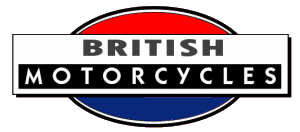

Winn was a motorcycle produced in 1966, by High Speed Motors of Witney, Oxfordshire. It was invented, designed and promoted by Russell Winn.
The Winn City Bike was a small-wheeled, battery-powered motorcycle, the working parts fully enclosed, intended for pollution-free transport in built-up areas.
The body-work was moulded from glass fibre, a twistgrip controlled motor speed and drum brakes were applied by handlebar levers.
The range between battery charges was given as between ten and twenty miles (16-32km) with a top speed of 30mph/48kmh. An overnight charge from the mains was said to cost just 2 pence.
'...The bicycle, known as the Winn City Bike, was launched in London a few days after our article was published, is 42 inches long, and is driven by a 1.2 Kwh battery giving it a range of 10 to 20 miles, and a top speed of 30 mph. Its advantages are that there are no fumes, no starting troubles, no gears, no noise (apart from the belt drive) and no maintenance, apart from recharging the battery. This is done by plugging the battery into the mains overnight, and running costs are estimated at less than 2d every 20 miles. Maintenance is also cut down by the construction: the machine has a totally enclosing plastic monocoque body, and standard interchangeable parts to facilitate repairs and after sales service.
In trying to judge the bicycle's value, and without yet having had an opportunity to give it a road test, we have a number of criticisms to make of the design. The first, and perhaps the most important, is that the seating position is fixed: there is no adjustment to meet different sizes of rider. Then, and this also affects the control of the machine, it has unusually short handlebars which fit between the knees of a long-legged rider.
According to Russell Winn, who designed it, the short handlebars provide as much control as those of normal length; but on our own brief trial it seemed quite possible that the handlebars could get caught up with one's knees when going round a corner. And finally, the bicycle itself has precious little provision for luggage, even though it is the right sort of vehicle for a woman who wants to take a pile of washing to the launderette, or collect the week's shopping.
There is a side car, either for carrying another passenger or for coping with luggage, but this is an extra which many people will want to do without. The bicycle is also quite heavy - 140lb - so that it is not a machine that could be carried upstairs. On the other hand, the designer has kept the centre of gravity extremely low, which helps stability and ease of manoeuvre.
As a machine for use about the town, the Winn City Bike has much to recommend it. But it does seem most successful when used with a sidecar, which improves stability as well as making the bicycle much more versatile; and the weight factor, which is unavoidable, suggests that batteries are really unsuitable for anything smaller than a town car. In fact, Mr Winn already has a car under the dust-sheets, and if the bicycle proves acceptable, the car will also be developed for the market.
The logic of this seems a little strange: after all, the success or failure of an electric bicycle doesn't necessarily have much to do with that of an electric car. But both developments help towards finding some sort of transport that really is suited to city life...'
Source: Graces Guide
If you have further information or a query related to this page, please contact us